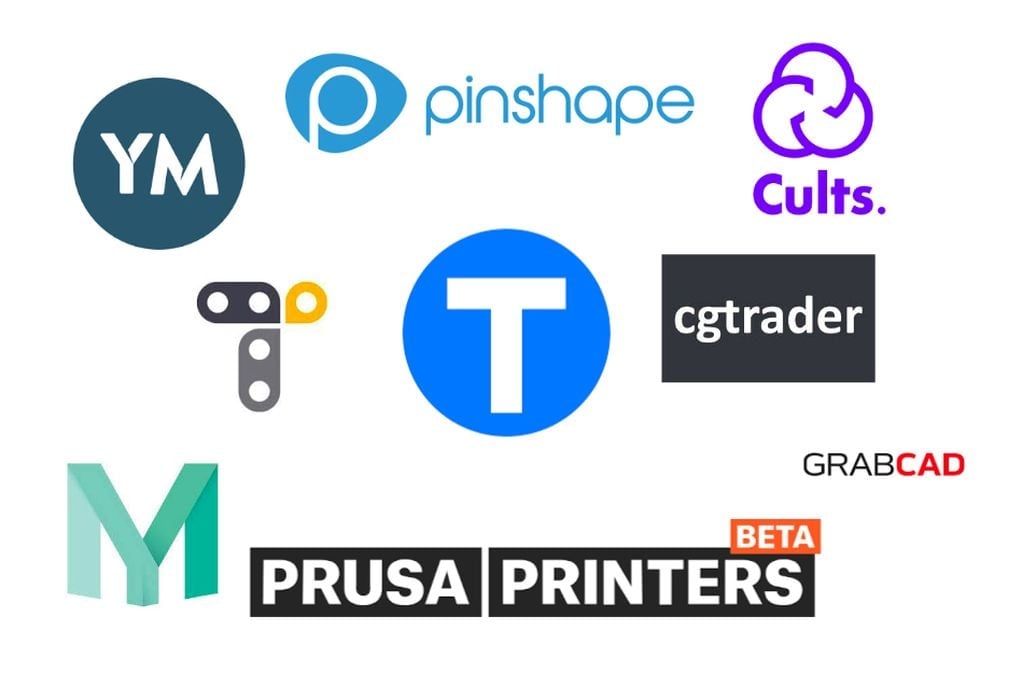
Recent controversies at popular 3D model repositories expose a fundamental problem with 3D content.
Those with 3D printers know there are only two ways to get designs for printing: design it yourself using CAD tools, or download a 3D model from a friendly online repository, such as Thingiverse, Printables, Thangs, and many others. (In fact, we have an extensive list of popular repositories in our annual “Alternatives to Thingiverse” post, if you’re interested.)
https://www.fabbaloo.com/news/alternatives-to-thingiverse-2021-edition
The original repo was Thingiverse, launched in 2009 to assist MakerBot in sales of their then revolutionary CupCake desktop 3D printer: you can’t use it unless there’s something to print.
MakerBot took on the idea of having users contribute 3D model content to Thingiverse, because it aligned with their then-strategy of open source development. It was also easier for MakerBot, as the customers did the work.
They were successful, and today there are millions of 3D models on Thingiverse.
But there are issues. Many of the models on Thingiverse are not really printable, because no one checks. Anyone can upload anything. That’s how the site became large, and it’s also why the content is not always good. With millions of entries, it’s essentially impossible for MakerBot to manage individual entries.
Since Thingiverse had success — and issues — others have attempted to take the crown by offering improved 3D model repository experiences. While there are dozens online today, dozens more failed miserably in their attempts over the years.
The basic problem was that in order to have customers downloading content, you need lots of content providers. But in order to have lots of content providers, you must have lots of customers downloading content. It’s the classic chicken-and-egg scenario, and few were able to overcome that barrier, with the exception being repositories that were separately funded by other parties.
As a result a key imperative of each repository is to attract more content, as fast as possible.
Some newer entrants have even made it easy to migrate content from other platforms onto their own using automated tools. This is quite convenient for users to move their content to platforms they wish to support, but it’s also had some negative results recently.
Automated migration tools are like atomic power: they can be used for good or evil.
That seems to be the case, as designers are increasingly finding their hard-built creations are appearing on other platforms — sometimes with incorrect credit and even offered for free even though they were originally pay-for 3D models.
Some weeks ago there was controversy about Creality Cloud, where this was happening. Creality began posting daily reports of “taken down” content to notify creators of their response to requests from designers.
This week there’s more of this happening, and Thangs is the platform in question. Consider this Twitter thread started by designer 3DPrintBunny discussing the issue:
Automated import tools definitely increase the amount of content on a repository, but not necessarily with legally correct content. There are some import tools that insist the content can only be downloaded from a valid account that “owns” the content on the other platform, and that helps. But even in that scenario it’s possible for determined individuals to circumvent protocols and upload any .STL file they can get their hands on.
The community and designer reaction is quite understandable: they ask the platforms to stop allowing this from happening, and to take down the offending files.
This makes sense, and any repository should do so.
But there’s a problem. The automation’s ease of use makes it far easier for perps to generate bad content than it is for a company to get rid of it.
While 3D content could be moved onto a platform at the touch of a button — as designed and intended — removal requires manual checking to ensure requests are valid. You don’t want to be taking down content that is valid, after all.
That might sound easy to do, but extremely difficult at scale. Imagine you’re in charge of removing bad content and there are 10,000 new items appearing every week. You’d need a large team to keep up.
Could this be automated instead? Maybe, but you run the risk of dumping actually valid content, which would cause other problems. What happens when the issue is not entirely clear? Do you default to removal or keeping the item online?
This is exacerbated by users. Consider this list of the top ten searches by Thangs users, published this week:
- Star Wars
- Pokemon
- Dragon
- Iron man
- Sword
- Batman
- Anime
- Car
- Skull
- Katana
- Cat
- Lego
I don’t know about you, but it seems like a few of these searches could involve commercial designs owned by companies. It’s not unheard of for large corporations to issue take-down requests to repositories to remove copyrighted designs. It’s easier for them as the larger companies have legal teams and can threaten lawsuits. It’s much more difficult for the thousands of smaller designers that have no legal teams of their own.
You can see the attraction for repositories to attract that kind of content if it is generating top ten requests.
This scenario is actually a form of the content moderation problem. In online forums there are similar challenges, where people post misleading messages or “banned content”, and the forum operator is faced with the requirement to moderate everything submitted. Sometimes automated tools are used to do so, but they invariably fail and block entirely valid content mistakenly. This happens on YouTube every day.
It’s impossible to manage user submitted content manually at scale, and it’s also impossible to completely manage it with automated tools. This is a no-win situation for everyone.
I don’t see how this is any different with submissions to 3D model repositories.
It’s likely we will continue to hear cases of appropriated designs until someone figures out a foolproof method of assigning owners to 3D content.
